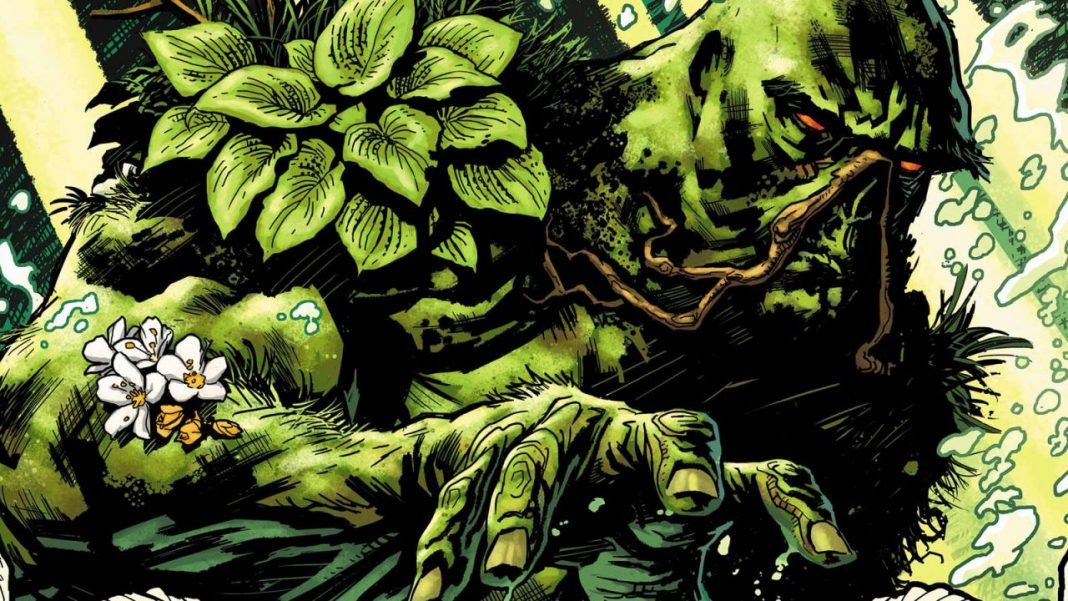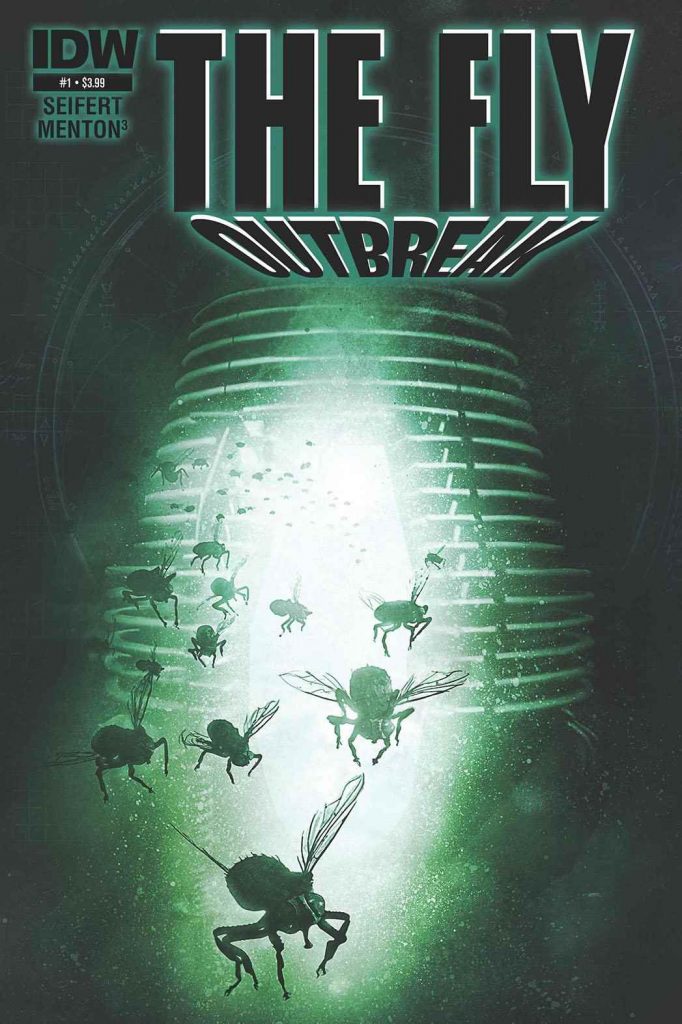If you’re not a comic book fan, you’re at least probably familiar with the name Swamp Thing. Maybe you remember it from the campy-but-fun Wes Craven movie. With that film, its sequel and subsequent TV series, Swamp Thing has cemented his place on the outskirts of pop culture by being remembered as a schlocky monster hero in the vein of The Toxic Avenger.
Which is why it might come as a surprise to the average person to learn that Swamp Thing is one of the most revered, profoundly written comic book series of all time. It definitely began life as a series highly influenced by the EC Comics of the 1950s, which featured many monsters and many swamps in equal doses. Reading those early issues by Len Wein and Berni Wrightson, one also sees clear influence from the Universal classic monsters.
Swamp Thing never forgot its classic horror roots by any means. But in the early 1980s, superstar comic writer Alan Moore took over the title and reshaped it into what would become one of the best series in comic history. He turned Swamp Thing into the thinking man’s monster, restructuring the overall narrative into a philosophical environmental horror story.
And make no mistake, Swamp Thing has always been at its best been a horror comic. The Swamp Thing was a creature who had no place in the human world and who cared only for the protection of the natural world, which he dubbed The Green. He was a sort of nature spirit, keeping a close eye on mankind and rejecting their world instead of pining for it. One of the first things Alan Moore did when he took over the Swamp Thing title was to restructure the title character’s origin in a fundamental way.

Moore kept in continuity and didn’t change any of this, he only added a revelation at the start of his run that would radically alter the way Swamp Thing thought about the world as well as himself: he wasn’t Alec Holland. Yes, the scientist was doused with chemicals and absorbed by the swamp as he died. So Swamp Thing inherited his memories, maybe occasional shards of his personality, but he was not and had never been human.
This shift immediately allows for a darker and more philosophical approach to the character right out of the gate. Moore’s entire run on Saga of the Swamp Thing continued that streak and offered many more revelations, as well as introducing fan-favorite characters like John Constantine along the way.
It became known as one of the most revolutionary runs in comic history and allowed Alan Moore to move onto breakout hits with DC such as Watchmen and V For Vendetta. It blossomed the success of one of the greatest writers in comic history, but ultimately didn’t save its own titular character from obscurity. Swamp Thing is known as a comic character, to be sure, but is still most remembered for his campy movie appearances.
 In all fairness, there wasn’t much Wes Craven could have done about this in 1982. His film version of Swamp Thing was made just before Moore’s revolutionary take on the title. But when Jim Wynorski returned to direct the sequel starring Heather Locklear, the series had risen to the height of its comic book popularity. Of course, Wynorski’s tastes have always leaned in the direction of high camp, so he pushed the sequel even further in that direction. Elements from the source material certainly made their way in there, but they were all played with a far more humorous tone.
In all fairness, there wasn’t much Wes Craven could have done about this in 1982. His film version of Swamp Thing was made just before Moore’s revolutionary take on the title. But when Jim Wynorski returned to direct the sequel starring Heather Locklear, the series had risen to the height of its comic book popularity. Of course, Wynorski’s tastes have always leaned in the direction of high camp, so he pushed the sequel even further in that direction. Elements from the source material certainly made their way in there, but they were all played with a far more humorous tone.
While Return of Swamp Thing does borrow some elements from Moore’s run on the comic, it’s much more upbeat and intentionally cheesy. It’s a schlocky, rubber suit monster flick, which was exactly the kind of thing that Wynorski wanted to do. Both features, I think, are fun. But neither one of them comes close to recapturing the depth and even the horror of the comic.
 I still think that Alan Moore’s Saga of the Swamp Thing could make for an amazing film, though. It would especially work now in an age where comics are taken much more seriously when adapted to the screen. If DC’s aesthetic is to create darker features than Marvel, then why not at least pick something with darker source material?
I still think that Alan Moore’s Saga of the Swamp Thing could make for an amazing film, though. It would especially work now in an age where comics are taken much more seriously when adapted to the screen. If DC’s aesthetic is to create darker features than Marvel, then why not at least pick something with darker source material?
Swamp Thing could make for an amazing movie with someone like Guillermo del Toro at the helm, who would arguably be better fitted to a straight adaptation of the comic than the Justice League Dark project he was working on. This has it all. It’s an environmental horror story, it’s got strong elements of body horror and even psychological horror as well.
But even if we never get that perfect adaptation of Swamp Thing on the screen, I’m more than grateful for the rich, layered and often terrifying material we’ve been given on the page.







